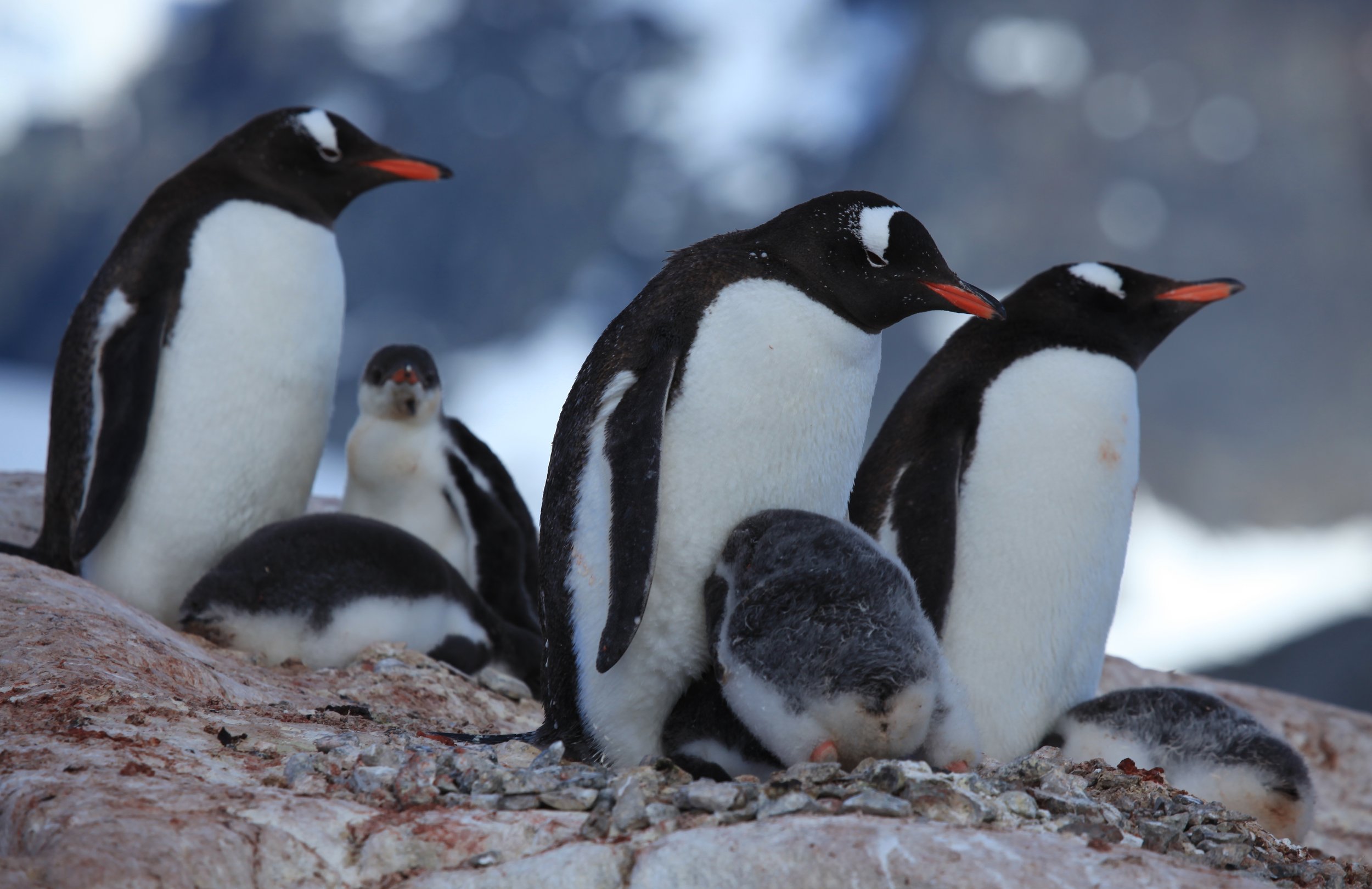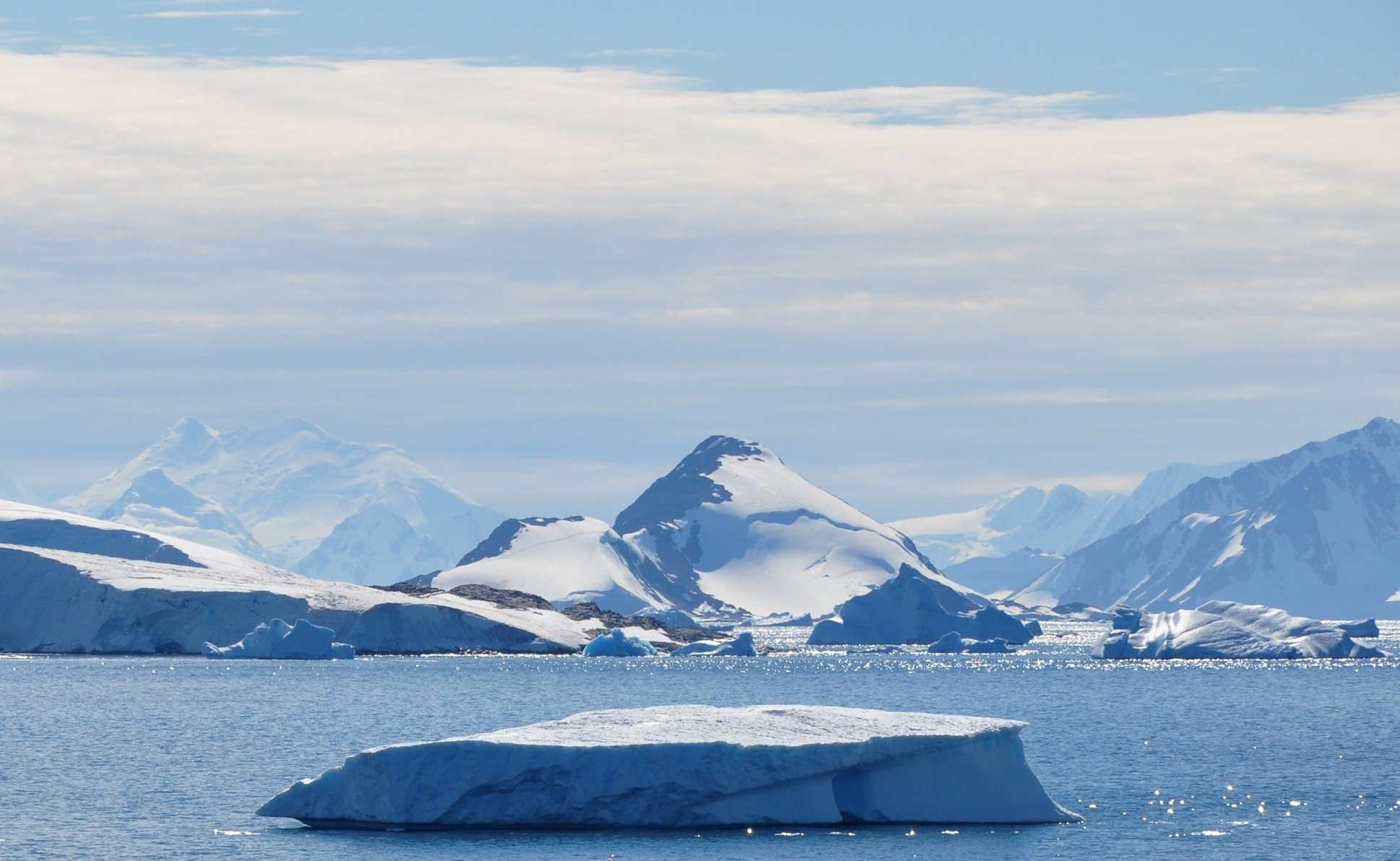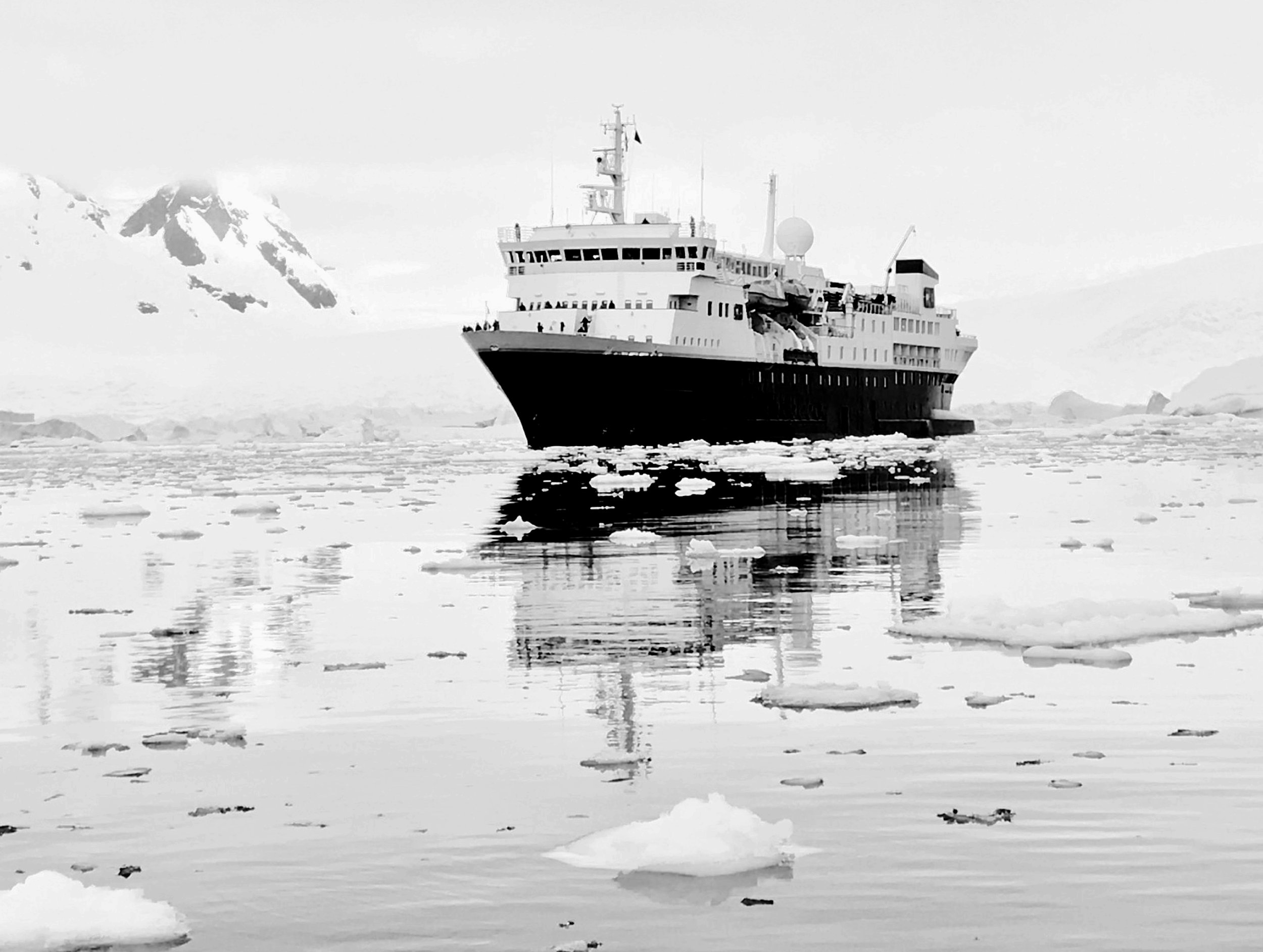Antarctica in October
Travelers with a proclivity for adventure and a penchant for the offbeat often dream of an Antarctic expedition. This white expanse, which covers the southernmost tip of our planet, remains an enigma for most, visited only by a brave few. And of these visits, few are as compelling as those that take place in October. The transition from winter to summer paints the Antarctic landscape in new hues, attracting an array of wildlife and creating an unparalleled canvas of natural beauty. For the intrepid explorer looking for authenticity, October presents the perfect opportunity to experience Antarctica at its most raw and unfiltered state.
Weather in Antarctica in October
Antarctica, the mystical white continent, embodies the pinnacle of untouched beauty and extremes. Located at the southernmost tip of Earth, it is a land where silence speaks volumes and its vast ice-covered landscapes offer a unique spectacle of serene yet harsh naturality. For those who dare to explore its confines, Antarctica offers an unparalleled adventure, especially as the October month heralds a transformation from the deep freeze of winter to the fleeting warmth of summer. This document seeks to guide the adventurous souls who aim to witness this pristine wilderness during one of its most dynamic times of the year.
Daylight Hours
In October, the sun begins to return to Antarctica after months of darkness. This gradual increase in daylight hours creates a unique environment for travelers. With an average of approximately 14 hours of daylight, visitors can witness the stunning transition from night to day and take advantage of longer days for exploration.
Weather Conditions
October marks the beginning of warmer weather in Antarctica, with an average temperature of -15°C (-5°F). However, temperatures can vary greatly depending on location and elevation. The Antarctic Peninsula tends to be warmer than other regions due to its proximity to South America, while inland areas and higher elevations experience colder temperatures.
Challenges and Considerations for October Travel
Planning a trip to Antarctica in October is thrilling yet demanding, needing thorough preparation. This period presents special chances to observe wildlife and ice formations. However, respecting the unpredictable and harsh conditions is crucial. Travelers should ready themselves for the physical and mental journeys this remote and majestic landscape prompts. We'll discuss the essential considerations and challenges of traveling to Antarctica in October, giving adventurers the knowledge for a safe and fulfilling experience.
Logistics and Safety
Traveling to Antarctica in October requires careful planning and preparation. The continent is known for its extreme weather conditions, unpredictable ice formations, and remote location. Travelers must be prepared for any potential challenges that may arise during their journey, including rough seas, strong winds, and harsh temperatures.
Remote Accessibility
Unlike other destinations, Antarctica does not have well-established transportation infrastructure. Most travelers arrive by ship, which can take several days to reach the continent. This means that once you are in Antarctica, there is limited access to medical facilities or supplies. It is essential to choose a reputable tour operator and ensure they have proper safety protocols in place.
Where to Go in Antarctica in October
Choosing the right location for your Antarctic expedition in October is essential for experiencing the region's stunning beauty and unique wildlife. Whether it's your first visit or you're returning, selecting the best spots is key to an unforgettable adventure. The continent's diverse landscapes, from the icy Antarctic Peninsula to the vast territories of East Antarctica, offer a variety of experiences. We'll guide you through the top destinations in Antarctica for October, helping you plan a memorable journey to the heart of the world's most secluded and pristine environment.
The Dry Valleys
The ice-free valleys located in Victoria Land stand out as some of the driest places on our planet. This region, with its almost extraterrestrial landscape, provides a stark and striking contrast to the expansive ice fields that dominate the surrounding areas. The valleys are home to unique geological formations that have been shaped over millennia, offering insights into the Earth’s ancient past. Additionally, these valleys shelter ancient microbial life within their perennially ice-covered lakes, presenting an invaluable opportunity for scientific research and exploration. This rare combination of features makes the ice-free valleys a fascinating subject for study, drawing scientists and adventurers alike to uncover the secrets held within this remote and inhospitable terrain.
Lake Vostok
Nestled beneath almost 4 kilometers of thick, frozen ice, Lake Vostok stands as one of the world's largest subglacial lakes. This remote and extreme environment captivates explorers and scientists alike, who are fascinated by the extremities of life on Earth. The allure of Lake Vostok lies in its hidden mysteries and the potential for undiscovered life forms residing beneath the ice. Its isolated ecosystem, untouched for millions of years, offers unique opportunities for research and could provide insights into the adaptability of life in extreme conditions.
The Crystal Sound
Nestled between the rugged beauty of the Antarctic Peninsula and the scattered, enigmatic Biscoe Islands, the Crystal Sound presents unmatched opportunities for ice exploration. It's a region where adventurers can encounter icebergs of the most stunning, clearest blue, and observe an array of marine life swimming beneath the transparent ice. This unique environment offers a glimpse into a world that seems untouched by time, where the natural beauty and the sheer scale of these icy wonders captivate all who venture here.
What to Do in Antarctica in October
Wildlife Watching
The wildlife in Antarctica is spectacular, with a unique diversity that stands out. In October, visitors see a natural show as migratory birds, including the snow petrel, arrive. Penguin colonies buzz with activity, and the impressive courtship of albatrosses is stunning, as they perform their mesmerizing dance. The surrounding waters showcase marine life's majesty, with humpback and minke whales making grand appearances. These sea giants captivate viewers as they gracefully move through the icy waters, sometimes breaching the surface with power and elegance. October is an exceptional time to witness Antarctic wildlife at its best.
Iceberg Cruising
Icebergs, those iconic floating giants of the icy south, are at their most impressive during this time. The sun casts an intricate interplay between light and ice, painting these mammoth sculptures in hues of blue and gold. Zodiac cruising can get you up close and personal, allowing for a true appreciation of their grandeur.
Kayaking Amidst the Ice Floes
For an unparalleled sense of immersion into nature's majestic beauty, consider the unique experience of kayaking through the serene inlets and narrow channels that meticulously carve through the Antarctic coastline. October, a time when the continent is just beginning to awaken from its winter slumber, offers pristine conditions for such an adventure - the air is refreshingly crisp, clear, and filled with the anticipation of the bustling wildlife season ahead. The water, though frigid, presents a glass-like calmness, a stark contrast to the tempestuous and unpredictable seas encountered during the peak of mid-summer. This period provides adventurers with a rare opportunity to quietly paddle through the icy waters, coming face-to-face with nature's marvels in a way that few ever experience.
Wildlife and Natural Phenomena in October
Witness the Big Migrations
It's a bustling time of arrivals in the remote, icy landscapes: Adélie penguins, in their distinctive tuxedo markings, waddle back to their stone-lined nests in droves, eager to reunite and raise their young. Meanwhile, fur seals, with their thick, warm coats, return to their traditional breeding grounds, filling the air with their unique calls. Above, the sky becomes a stage for an avian chorus, as seabirds of all descriptions, from the majestic albatross with its expansive wingspan to the swift and agile terns, homestead for the breeding season, adding to the symphony of sounds that define this vibrant period.
Halley's Comet and the Early Summer Stars
The clear and lengthy October nights provide the perfect showcase for some of the Earth's most distant neighbors. While Halley's Comet isn't scheduled to make an appearance in October of 2061, the celestial display of Antarctica's night sky is a must-see in itself.
Ice Formations and Sculptures
Witness the grandeur of ice in its many majestic forms — from the intricately sculpted waves capturing the essence of a frozen moment to the awe-inspiring luminescent blue caves that shimmer with an ethereal light. October heralds a time when ice reveals its most dynamic and breathtaking state, with the cracking and calving of ancient glacial structures serving as a vivid reminder of the continent’s constant state of flux. This spectacular display of nature’s artistry invites observers to marvel at the ever-changing beauty and the powerful forces at play within the Earth’s icy realms.
Events and Happenings in Antarctica in October
Celebrating World Space Week
Antarctica, renowned for its pristine air and virtually non-existent light pollution, represents an idyllic paradise for astronomers. In the heart of October, during the international celebration of World Space Week, various expeditions take advantage of this unique environment to offer special stargazing sessions. These events not only allow participants to gaze upon the stars in unparalleled clarity but also serve as educational opportunities, where the mysteries of the cosmos can be explored and appreciated in the majestic skies above the Antarctic expanse.
Research Missions and Optional Participation
Visiting scientific research stations provides a unique opportunity to explore ongoing environmental research and conservation initiatives. Often in remote locations, these stations offer insights into advanced studies aiming to better understand our planet. Some facilities, like those in Antarctica, welcome visitors, offering a glimpse into the daily lives of researchers working under harsh conditions to enhance our environmental science knowledge. This educates the public about conservation importance and showcases the dedication and challenges scientists face in extreme environments.
The Crossing of the Circle
For adventurers embarking on more extended voyages, October holds a special significance as it is often the month in which the mythical Antarctic Circle is crossed. This pivotal milestone marks a profound transition, moving from the turbulent, untamed waters of the Southern Ocean to the unparalleled rawness and pristine beauty of the Antarctic continent. This crossing is not just a geographical shift but symbolizes a deeper journey into the heart of one of the planet's most enigmatic and untouched frontiers.
Cultural and Historical Significance
The Spirit of Exploration
Visiting the remains of early research stations and famous explorer huts provides an intimate glimpse into the untamed spirit of the great explorers. These historic structures, often weathered by time and harsh conditions, stand as silent witnesses to the courage and determination of those who ventured into uncharted territories. Walking through these relics stirs the soul with a profound sense of awe and an inspiration to conquer the unknown, reminding us of the incredible feats of human endurance and the relentless pursuit of knowledge.
The Indigenous Influence
Before the era of scientific study, Antarctica was an enigmatic land, sought out by indigenous peoples for spiritual and cultural practices. These communities had deep connections with the icy expanse, performing rituals and ceremonies that honored the unique environment. The recognition of their history is fundamental to understanding and respecting the continent’s heritage. By acknowledging their contributions and experiences, we can gain a richer appreciation of Antarctica's past and its significance to various cultures.
Understanding Silence and Solitude
Antarctica is a place of profound quietude, where time itself seems to slow down as the vast, icy expanse stretches endlessly beneath the shimmering sky. The landscape is dotted with towering icebergs and expansive glaciers, their immense beauty almost surreal. Invisibly, this stillness imparts a significance that resonates within the visitor, acting as a modest yet magnetic teacher. It elucidates the inescapably colossal nature of our world, reminding us of both its fragility and its grandeur. The sheer isolation and pristine beauty of Antarctica offer a unique, almost spiritual experience that leaves an indelible mark on all who venture there.
Environmental Conservation in the Antarctic
Appreciating and Protecting the Ecosystem
Visitors to Antarctica have an exceptional opportunity to experience a world ecosystem that remains largely untouched by humankind. The pristine ice landscapes, diverse wildlife, and harsh, yet awe-inspiring climate offer a unique glimpse into a world few get to see. This serves as a critical reminder of the planet’s fragility and the responsibility each individual has in preserving its natural resources. By witnessing the untouched beauty of this remote continent, we gain a deeper appreciation for the delicate balance of nature and the urgent need to protect it for future generations.
Responsible Visitor Guidelines
Several organizations advocate for responsible travel in Antarctica, outlining the do's and don'ts of environmental etiquette. These guidelines range from maintaining a safe distance from wildlife to disposing of waste responsibly, ensuring that the pristine environment is preserved. Visitors are encouraged to tread lightly, minimize their impact, and leave no trace behind. This primary creed is essential for protecting the delicate ecosystems and unique landscapes of the region, allowing future generations to experience the same untouched beauty. Additionally, travelers are often advised to respect scientific research stations, adhere to designated paths, and avoid disturbing natural features.
Supporting Conservation Efforts
Many cruises are affiliated with organizations actively involved in Antarctic conservation. These partnerships aim to preserve the pristine and fragile ecosystem of the continent. Passengers often have the chance to learn about these efforts through onboard lectures, documentaries, and guided tours. Additionally, they can donate to support the protection of the continent's unique environment, helping fund research and conservation projects that ensure the sustainability of this remote and extraordinary region.
Tips and Advice for Your Antarctic Venture
Dressing for Success — Antarctic Style
Packing for an Antarctic voyage in October is all about layering and selecting the right gear to ensure you stay warm and dry. This includes thermal undergarments to retain body heat, waterproof and windproof outer layers to protect against harsh weather conditions, and well-insulated boots to keep your feet warm in freezing temperatures. Additionally, don’t forget accessories like gloves, hats, and scarves to protect your extremities. For more detailed information, check out our comprehensive blog post on what to pack for Antarctica, where we delve into specific brands and tips for making your trip as comfortable as possible.
Staying Healthy and Safe
Health is of utmost concern in such remote destinations. It's advised to have a thorough health check before the trip and to be as cautious as possible. Ensure that you carry all necessary medications and first-aid supplies. The Antarctic sun is deceptively strong, even on overcast days, so sun protection is not to be overlooked. This includes wearing high-SPF sunscreen, sunglasses, and protective clothing. Additionally, staying hydrated and maintaining proper nutrition are crucial for your well-being in these extreme conditions.
Navigating the Logistics
Antarctic travel involves several logistical steps, including obtaining any necessary permits, arranging transportation, and ensuring adherence to environmental regulations. It's important to book early, as voyages during this time are limited and highly popular amongst travelers seeking authentic, in-depth experiences. Additionally, travelers must prepare for the extreme weather conditions by packing appropriate clothing and gear. Given the remote nature of the destination, ensuring access to emergency medical care and understanding communication limitations are also crucial. The stunning landscapes and unique wildlife make the thorough preparation well worth the effort.
Final Thoughts on an October Antarctic Expedition
Antarctica in October is a haven for those who seek an adventure truly out of this world - but firmly grounded in the heart of our planet. The landscapes of this southernmost continent shift in subtle, magnificent ways during this month, inviting travelers to witness the birth of a new season. From encountering some of the world's most unique creatures to experiencing the awe-inspiring tranquility of the White Desert, every moment in October is an opportunity to connect with nature at its most primal. If the lure of the unknown and the call of the wild speak to you, then an Antarctic expedition in October just might be the most extraordinary adventure you’ll ever undertake.
Interested in visiting Antarctica in another month? Check out our other guides below:


























